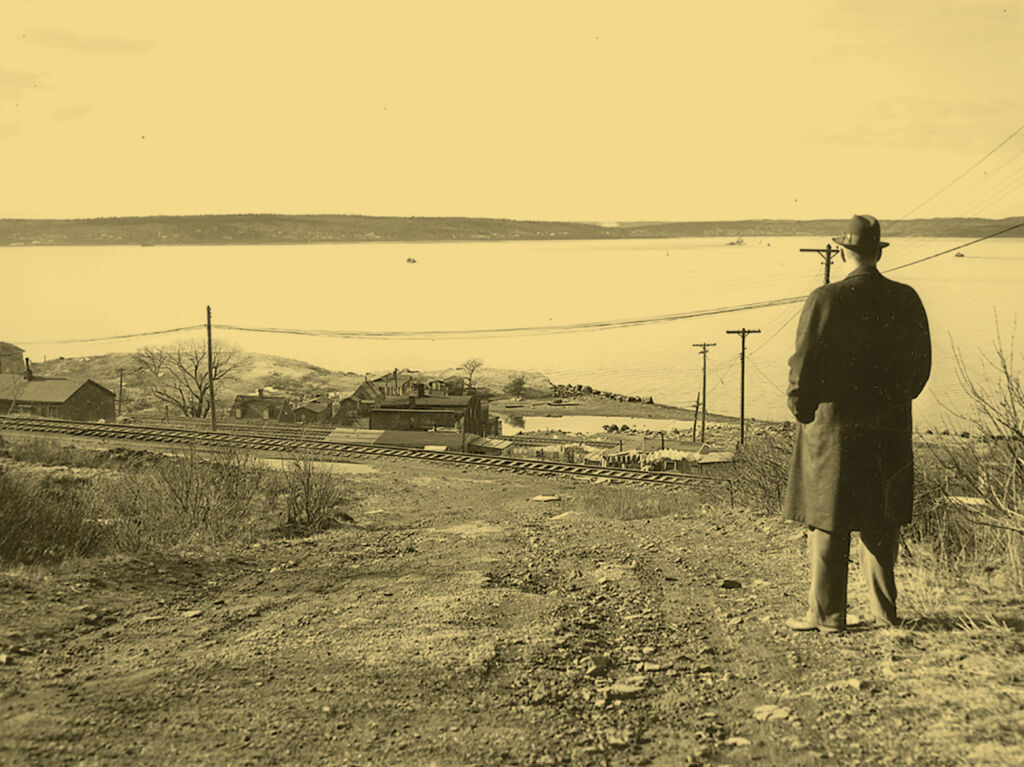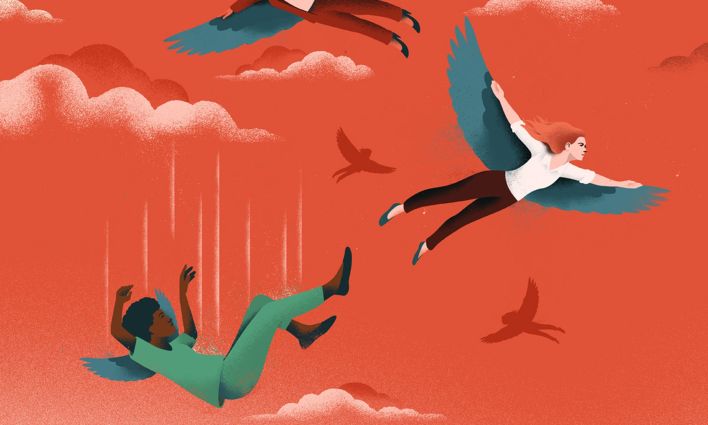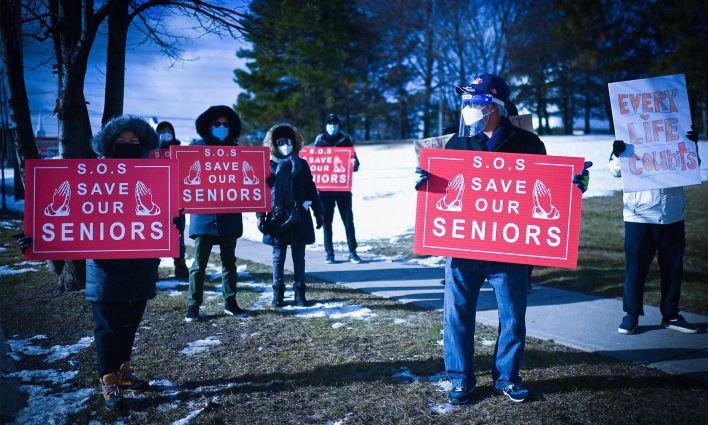In reflecting on twenty years of anti-terror legislation in Canada, I cannot help but to think about how this period intimately relates to the centuries-long experiences of Black life in this country and on this continent of Turtle Island, now called North America. In reflecting on the theme of this issue, “20 years of anti-terror,” I am immediately prompted to reflect on this period’s relationship to the nearly four centuries of terror Black people have experienced on the lands now claimed by Canada.
This reflection leads me to firmly believe that the individual, social and systemic injuries and injustices caused by the anti-terror era could likely have been foreseen, prevented, pre-empted, less prevalent and/or less serious. In other words, I’m left feeling that Canada may have avoided many of the post-9/11 era’s incursions on the rights, freedoms, well-being and belonging of individuals if our country and society featured a greater awareness, understanding and reckoning with Canada’s history and legacies of slavery.
There are instructive and alarming consistencies between the histories and legacies of slavery, on one hand, and the anti-terror era on the other. To help illustrate this, it’s important to clarify the connections I’m making here by pointing to the specific experience of Black life in Canada since the early 1600s. This experience can be characterized as living within the conditions of terror.
The centuries of terror continually endured by Black people have come in the form of living under the reality, if not the perpetual and proximate threat, of having our lives, inalienable human rights, inherent dignity, fundamental self-worth and/or civil liberties taken, denied and/or violated by a state actor or private civilian.
I don’t think about this history and ongoing legacy of slavery in contrast to the previous two decades of anti-terror, but rather see the post-9/11 era as a permutation and extension of that history and legacy.
This state of terror originates in the centuries of legalized enslavement of Black people in North America (including Canada), and the perpetuation of the systemic subjugation of Black people post-slavery. This has come through state-sponsored and/or socially supported practices of anti-Black racism in the forms of segregation, lynching, violence, hate, exclusion, marginalization and disadvantage. These forms of discrimination have dominated the experiences of Black people in the areas of employment, education and business, housing, health care, social security, as well as the systems of child welfare, policing and incarceration, immigration and refugee systems. Historically, the terror came primarily from individuals in the roles of slave masters, slave-catchers, slave profiteers and pro-slavery civilians.
Since the abolition of slavery, the evolution of these roles are too often systematically operationalized through people serving as police, border agents, immigration officers, correctional officers, employers, work colleagues, child welfare workers, school administrators, and even social service workers. Today, this also includes private civilians now euphemistically referred to as “Karens.” These are people (typically characterized as white women), who scrutinize, monitor and surveil Black people because they view them as inherently suspicious and quickly call or threaten to call police, security and public safety officials on Black people for being in their presence and/or not behaving in ways that centre their sense of comfort by way of immediate and unconditioned compliance with the orders or expectations of white people. This is the spectre of anti-Blackness that Black people have and continue to live under in Canada and across North America.
I don’t think about this history and ongoing legacy of slavery in contrast to the previous two decades of anti-terror, but rather see the post-9/11 era as a permutation and extension of that history and legacy.
The last two decades have been characterized by specific and arguably avoidable human tragedies, social injustices and state interventions in the name fighting terror. There are the countless cases of state and social scrutiny, monitoring, surveillance, containment, control, violence, torture and punishment that primarily Muslim, Arab and South Asian individuals and communities have suffered and continue experience. The criminalization of protest, organizing and advocacy experienced by Indigenous and environmental activists and the militarization of state responses to perceived and actual threats of terror have too typically characterized the last twenty years of anti-terror.
Among those who have experienced the worst of the connections between Canada’s legacy of slavery and the last twenty years of anti-terror, are those who live at the intersection of Blackness and Muslim identities. These folks have been experiencing a unique and under-explored kind of suffering that Muslim Black feminist scholar, Délice Mugabo, has described as anti-Black Islamophobia. Black Muslims have had a very distinct experience of this anti-terror era given that the injustices of Islamophobic realities and outcomes flowing from this era have been inextricably connected to and compounded by their experiences of anti-Blackness.
These histories reflect and reinforce each other when we think about the role of moral panic driven by deep and widespread fear that has characterized both eras in similar and distinct ways. With respect to Canada’s history of anti-Blackness, it’s important to remember that in 1868, John A. MacDonald deployed anti-Black stereotype about Black men as inherently predisposed to engaging in sexual violence, particularly against white women, to justify maintaining Canada’s death penalty at the time, saying:
We have retained the punishment of death for rape [ ...] on account of the frequency of rape committed by negroes, of whom we have too many in Upper Canada. They are very prone to felonious assaults on white women.
Decades later in 1911, Prime Minister Wilfrid Laurier supported the implementation of a policy of excluding Black people from freely migrating into Canada on the basis that “the Negro race” was “unsuitable to the climate and requirements of Canada.”
The anti-terror era has similarly featured criminalizing and Islamophobic stereotypes to justify harsher legal penalties while also lowering and preventing migration of Muslims from Western and/or South Asian countries to Canada. This has been done on the basis of seeing these people, because of their faith, as inherently dangerous and threatening to Canada and Canadians.
The parallels also extend to invasions of privacy and security rights of Black people in Canada out of fear of Black organizing and protests. David Austin’s book, Fear of a Black Nation, documents how, in the 1960s, the RCMP used their own spies as well as borrowed spies from the CIA to surveil, control and infiltrate Black student and community organizing in Montreal to stop the spread of the Black Power Movement. State surveillance out of fear of Black organizing and protest has continued to be a feature of Black life, having targeted leading Black advocacy organizations such as the Black Action Defence Committee in Toronto in the 1980s and 1990s, and even today with the state surveillance of the members and activities of the Black Lives Matter movement, confirmed by Canadian authorities in 2015 and 2021.
Black people in Canada, and Muslim, Arab and South Asian community members, find the histories and legacies of slavery and the anti-terror era, leave them conjoined as the primary targets of the dubious and destructive practices of over-policing.
Finally, racial profiling has been an endemic feature of Black life for several decades, having taken on new, but deeply consistent and familiar forms during the anti-terror era. The Supreme Court of Canada has affirmed the illegality of racial profiling, defining it as:
Any action undertaken for reasons of safety, security or public protection, that relies on stereotypes about race, colour, ethnicity, ancestry, religion, or place of origin, or a combination of these, rather than on a reasonable suspicion, to single out an individual for greater scrutiny or different treatment.
In a recent landmark decision outlawing racial profiling and its associated practice of carding as a legitimate police practice, the Supreme Court of Canada in R v. Le decried it as a rights-eviscerating form of over-policing. Specifically, the majority stated that racial profiling, “contributes to the continuing social exclusion of racial minorities, encourages a loss of trust in the fairness of our criminal justice system, and perpetuates criminalization.”
Black people in Canada, and Muslim, Arab and South Asian community members, find the histories and legacies of slavery and the anti-terror era, leave them conjoined as the primary targets of the dubious and destructive practices of over-policing. Those living at the intersection of these identities, who have their bodies marked as both Black and Muslim know this reality too painfully well.
In her book, In the Wake: On Blackness and Belonging, Prof. Christina Sharpe provides an exceptionally lucid analysis of the interrelationship between anti-Blackness and terror. In her text she uses the wake as a metaphor for the conditions of Black life informed by the history and legacies of slavery, to say that Black people find themselves “living in the wake.” Explaining this, she writes,
[…] living in the wake means living in and with terror in that in much of what passes for public discourse about terror we, Black people, become the carriers of terror, terror's embodiment, and not the primary objects of terror's multiple enactments; the ground of terror’s possibility globally.
This framing informs my own thinking about Blackness in Canada. As such, it leaves me frustrated when I encounter Canadian analysis of the specific anti-terror excesses spurred by 9/11. I wonder, "How could we not have more effectively seen this coming? Why weren't we as a Canadian society better prepared to prevent these widespread abuses?"
It reminds me that all Canadian lives can't matter, unless and until Black Canadian lives matter.
Notes
Header image from the Halifax Municipal Archives, Date: 1965, A police officer overlooks several Africville houses and Tibby's Pond. Retrieval Code: Halifax Police Department photograph, 102-16N-0065.M








